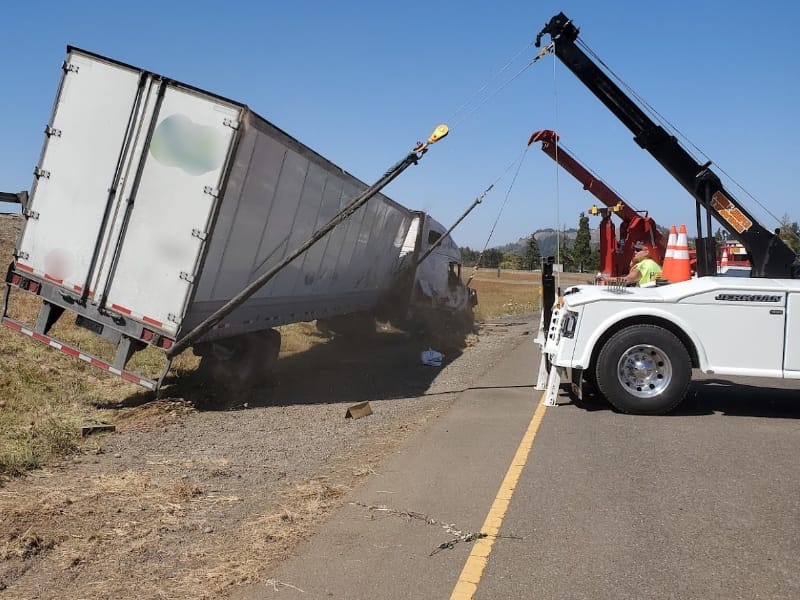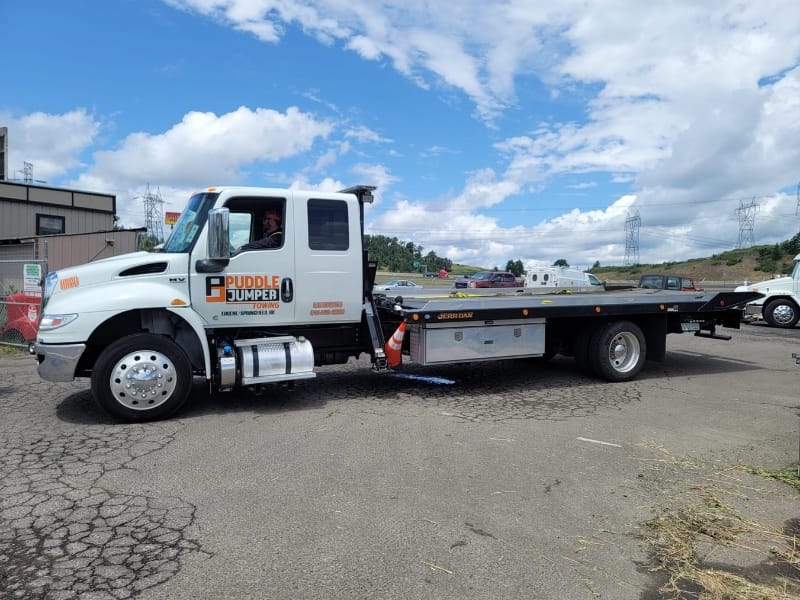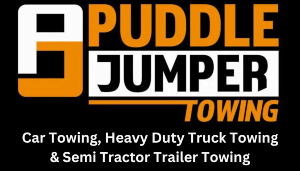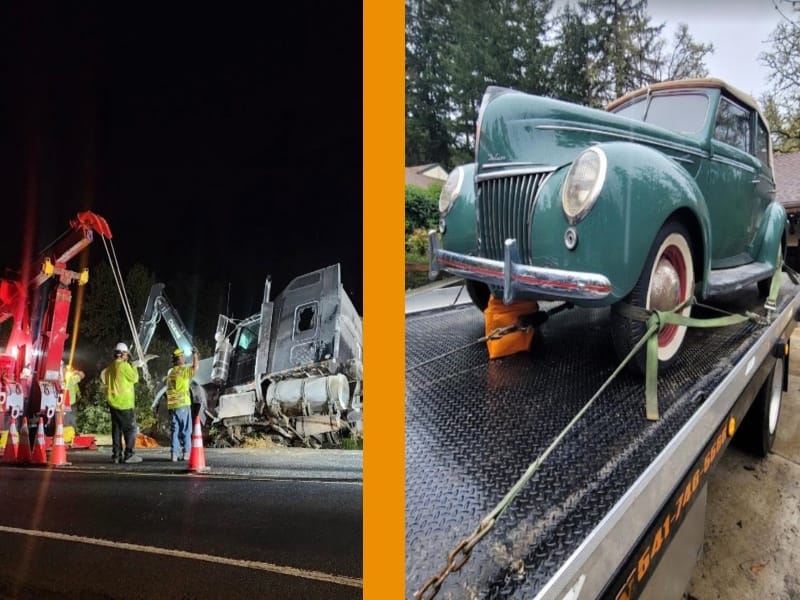One Size Doesn’t Fit All
We get this question more often than you might think: what’s the difference between heavy-duty recovery and light-duty towing? To most drivers, a tow is a tow. But in our line of work, the difference between the two can change the entire approach to a job. So today, we’re breaking down what separates heavy-duty recovery from light-duty towing and how Springfield heavy recovery fits into each.

Not All Tows Are Created Equal
When someone’s stuck on the side of the road, they usually just want help—fast. But the type of tow truck we send and the way we handle the vehicle depends a lot on the size, condition, and position of that vehicle.
Here’s how we break it down:
Light-Duty Towing: Everyday Vehicles
Light-duty towing covers most of what you see daily on the road. It’s for passenger cars, small SUVs, motorcycles, and light pickups. These vehicles are relatively easy to tow, and most of the time, a standard flatbed or wheel-lift tow truck will do the trick.
We use light-duty towing when:
- The vehicle is under 10,000 pounds
- It’s stuck in a driveway, parking lot, or side of the road
- The issue is a flat tire, dead battery, or engine trouble
- The vehicle is accessible and not overturned or down an embankment
This kind of work usually means a quick hookup and a short drive to a repair shop. It’s straightforward, but that doesn’t mean it’s always easy. Tight spaces, busy streets, and low-clearance garages can still make for a challenging job.
Heavy-Duty Recovery: When Things Get Complicated
Springfield heavy recovery really comes into play when we’re dealing with big rigs, buses, construction equipment, or vehicles that are overturned, sunk, or seriously off-course. Recovery is the keyword here—it’s not just towing; it’s extracting, stabilizing, and sometimes lifting heavy vehicles out of dangerous or awkward positions.
Some examples of when we call in heavy-duty recovery:
- Tractor-trailers rolled over on the highway
- Dump trucks stuck in mud or snow
- Motorhomes broken down on steep grades
- Buses needing extraction after a collision
- Equipment recovery from job sites or remote areas
These jobs often require more than just muscle. They need planning, coordination, and sometimes lane closures or even cranes. And that’s where Springfield heavy recovery proves essential—handling the weight, complexity, and risk that lighter trucks can’t manage.
Key Equipment Differences
Light-duty tow trucks and heavy-duty recovery vehicles look worlds apart. Here’s what sets them apart:
- Light-duty trucks use wheel-lifts and flatbeds, ideal for fast loading and smooth rides.
- Heavy-duty wreckers come with massive booms, winches, and hydraulic lifts capable of pulling buses or semis back onto the road.
- Heavy-duty rigs can tow more than 26,000 pounds, while light-duty ones top out around 10,000.
It’s not just about strength; it’s also about stability, balance, and the ability to control heavy loads safely under pressure.
Why the Distinction Matters
Calling the wrong type of service isn’t just inconvenient—it can damage your vehicle or delay a recovery. When someone requests Springfield heavy recovery, we know we’re dealing with more than a flat tire or dead battery. We prepare for a more involved process with safety and structural concerns at the top of our checklist.
It’s also a matter of efficiency. Light-duty calls can be resolved quicker with smaller trucks that maneuver through traffic better. Heavy-duty jobs might need road closures, permits, or coordination with law enforcement or fire departments. Knowing the right approach helps us plan the right response.
Here’s a Quick Guide:
- Light-Duty Towing:
- Cars, motorcycles, small SUVs
- Flatbeds or wheel-lift trucks
- Common roadside calls
- Easier access and transport
- Heavy-Duty Recovery:
- Semis, buses, RVs, equipment
- Wreckers with booms and winches
- Rolled, stuck, or off-road vehicles
- Complex or high-risk extractions

Puddle Jumper: Your Springfield Heavy Recovery & Light-Towing Experts
We take every call seriously, whether it’s a compact car with a dead battery or a jackknifed trailer blocking a ramp. The key is knowing what kind of tow it is before we get there—and that’s why we always ask the right questions. If you ever wonder why we dig for the details on the phone, now you know: it helps us decide if your situation needs a light-duty tow or full Springfield heavy recovery.
By understanding the difference, you help us help you faster and better. And we’ll always bring the right truck for the job—no more, no less.
Let’s just say, when it comes to Springfield heavy recovery, we’re in it for the big hauls, the complicated messes, and the jobs most folks would rather not touch. But light-duty towing? That’s where it all begins. And we’ve got both ends covered.

